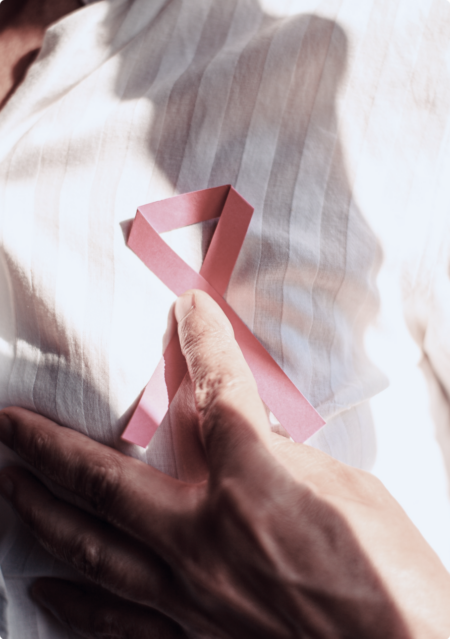
Ovarian Cancer
Ovarian cancer is the 6th commonest cancer in women. The risk increases as we age. With the commonest age to be diagnosed being between 75 and 79 years.
The symptoms to watch for are a feeling of fullness and bloating, lower abdominal pain, and needing to pass urine more frequently. A lot of these symptoms are nonspecific so it is worth knowing what is normal for you and noticing if something changes. In particular over the age of 50.
If you have symptoms then you will often be given a blood test and an ultrasound scan to help make the diagnosis. If these are positive then you will normally then be referred to a specialist for further scans and biopsy.
Outcomes are better when ovarian cancer is picked up earlier so don’t put off seeing a doctor if you are worried.
5 to 15% of ovarian cancer is caused by an inherited faulty gene such as BRCA1 and BRCA2.
So what can we do to reduce our risks?
Be self aware
Notice when things change and seek help from a doctor.
Weight Management
Think about weight management. Having excess body fat has been linked to an increase in risk. Seek out help as once weight is increased it is hard to lose.
Stop Smoking
Smoking causes an increase risk not just for this cancer but many cancers. Seek out help as this is an addiction and is never easy to stop.
Understand the impact of hormones.
The combined contraceptive pill is seen as reducing our risk of ovarian cancer, as is having children and breast feeding. However there is a small increased risk with taking HRT after the age of 50 which is worth considering in the benefits and risks debate around HRT.

Cervical Cancer
Those in their 30s are most likely to be diagnosed with cervical cancer compared to other age groups. 9 women a day in the UK are diagnosed. It’s main cause is infection with Human Papilloma Virus (HPV) which is a common virus but thankfully is on the decline because of the vaccine that young girls are getting in school.
The symptoms that we need to watch out for are irregular bleeding or discharge, pain during or after sex and pelvic pain. But often there are no symptoms and the best way we can protect ourselves is by attending screening.
The screening service has changed in recent years with a move towards checking for HPV infection first and then looking at the cells on the smear test if a woman is HPV positive. If you are found to be HPV positive you will be recalled in a year. If you are negative the screening interval has increased to 5 years. This never takes away from your ability to be checked out if you are symptomatic and should mean that those of us who are at higher risk of cervical cancer because of our HPV status are seen more frequently.
If you are found to have abnormal cells on your smear you will be referred for colposcopy. This is when the specialist will have a closer look at your cervix and determine what treatment you need. The commonest treatment is a LLETZ (Large loop excision of the transformation zone) procedure which will be done at colposcopy and will take away the abnormal cells.
The outcomes from this procedure are very good with 95% of women having their cancer successfully treated.
As with every cancer the earlier it is diagnosed the better so make sure you attend your screening when called and check in with your doctor if you are symptomatic.
Uterine Cancer
Uterine cancer is the 4th commonest cancer in women in the UK with the highest incidence in women aged 75 to 79 years. Uterine cancer has been linked to higher deprivation and has the highest incidence in women in the Black ethnic group.
The main symptom to look out for is unusual bleeding. This might be post menopausal, it may be between periods or it may be in the form of an unusual bleed or discharge. There are lots of other reasons why women have unusual bleeding and 90% of uterine cancers are picked up early.
75% of uterine cancers occur in 40 to 75 year old women and the main risk factor that we can try to improve is our body weight. High body weight is associated with an increased risk which is thought to relate to higher levels of circulating oestrogen.
Other things that increase our oestrogen levels can also increase our risk. This means having caution with the use of HRT and why the oestrogen in HRT for most women needs to be given with progestogen which will help avoid the uterine lining becoming too thick. Women with diabetes and PCOS are also at a slightly higher risk again because of hormone imbalances. The combined contraceptive pill is seen as being protective as is having children.
Like a number of other cancers it is thought that being active and eating healthily reduces our risk although there is no scientific evidence for this, it may well help if it reduces our body fat and circulating oestrogen.
Having a family history increases our risk of uterine cancer with Lynch syndrome forming a small group of women who have a genetic tendency towards several different types of cancer including uterine and bowel cancers.
If you have symptoms then it is important you speak to a doctor. They will normally send you for an ultrasound scan to look at the thickness of the lining of the womb before referring you to a specialist to look more closely, which is called a hysteroscopy. Like all cancers the earlier they are detected the better. Uterine cancer has a great prognosis in the early stages with over 90% of women being treated successfully.


